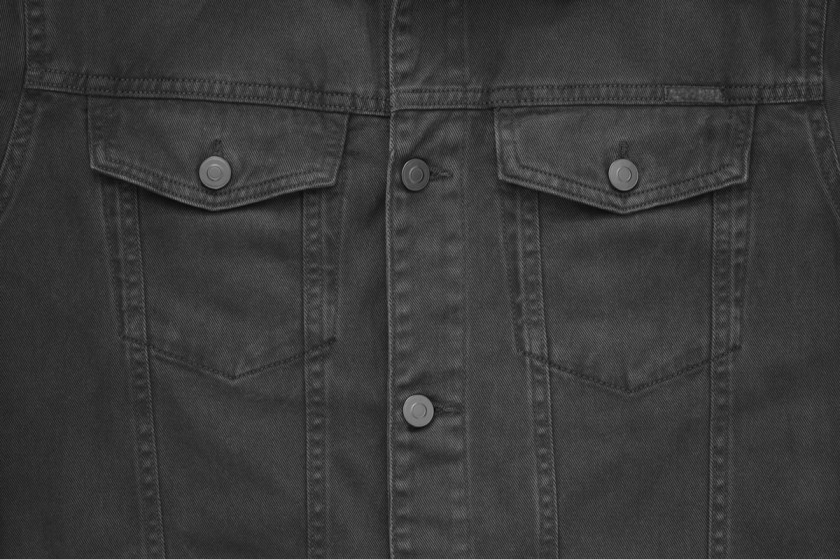Top 10 Quality Audit Checklist for a Successful Fashion Apparel Brand



The apparel industry is fashion-driven. An unprecedented growth of media and internet has accelerated the speed at which fashions or trends change. Consumers have now become more aware of the trends and the choices available to them in terms of designs, quality, and affordability, rendering the garment industry extremely competitive. The trend that is currently driving the apparel industry is a shift from tailor-made customized clothing to mass-produced ready-made clothing. This calls for a standardization of garments and quality assurance at every level.
Consumer satisfaction and revenue generation are two end goals of any business. Just like any other industry, the apparel industry also needs to ensure quality in order to meet customer requirements, create and maintain brand value and reputation, and thrive in the competitive marketplace. Quality and reliability play a crucial role when it comes to establishing long-term relationships with customers. For example, no one wants to buy a shirt or a pair of jeans and find defects in them. Customers do not return to a brand or recommend it, when they have an unpleasant experience with its products or customer service.
What is Quality?
Quality means the extent to which a manufacturer can meet a buyer’s demands with respect to maintaining certain essential characteristics or attributes of a product. In any industry, ‘Quality Assurance’ aims to define the standards and methodologies to be followed during each step of manufacturing for building quality. ‘Quality Control’ aims to evaluate if the set standards were met after the products have been manufactured and classified as acceptable and unacceptable.
The four key quality control methods include Six Sigma, x-bar chart, Taguchi Method, and 100% inspection mode. For acquiring quality wholesale clothing in the wholesale apparel industry, garment quality is examined during the pre-production, production, and final inspection phases. Establishing a set of quality standards and communicating them before starting the manufacturing process can help streamline the entire quality wholesale clothing acquisition, for both the manufacturer and the wholesale buyer.
Some important aspects, which determine the quality of any product include product performance, capability to meet requirements, reliability, durability, innovative features, conformance to specifications, aesthetics, maintenance, after sales service, and so on. For creating high-quality apparels or purchasing quality wholesale clothing from manufacturers, preparing a quality audit checklist can help develop and maintain a successful fashion apparel brand.
Stages of Quality Control
For wholesale production of garments, it is essential that every piece of clothing is an exact copy of the sample that has already been quality checked and confirmed as meeting the AQL (Acceptable Quality Level). For quality wholesale clothing in the apparel industry, quality audit is conducted at several stages during the entire process.
The manufacturer’s internal quality assurance team is responsible for inspecting raw materials, semi-stitched clothes, stitched clothes, and finished garments, as well as packaging. Whereas, the buyer’s QA team undertakes shipment assessment once the shipment is packed, to ensure product and packaging quality and product safety. As this assessment needs to be thorough and unbiased, a previously prepared and agreed-upon quality audit checklist can come in handy.
As prevention is better than cure, an apparel quality audit checklist should be prepared prior to the actual production and should be used as a reference guide throughout the production process on site. The tool kit for post-production quality audit should include a measuring tape, dial calipers, digital camera, defect stickers, pantone colour swatch, and barcode scanner.
The top 10 components of an effective quality audit checklist have been discussed below.
Factory and Warehouse Audits

In order to avail quality wholesale clothing, before placing an order, wholesale buyers tour the entire factory and warehouse facilities to inspect general production facilities, factory environment, operations, and available equipment. The quality audit checklist pertaining to this section aims to review the aspects like appropriate production conditions, regular cleaning and maintenance, routine equipment testing, proper storage conditions, mold prevention and humidity control systems, inventory tracking systems, trims and accessories, CAD-CAM, essential certifications, social compliance, and so on.
Sample Test
A sample test involves reviewing a product sample for verifying a manufacturer’s capability to meet the buyer’s quality criterion and design requirements. Sampling is like laying the foundation of a product, and a perfect sample can act as a benchmark for quality wholesale clothing. In the apparel industry, professional third party fabric and garment tasting is conducted. Sample fabrics are tested for their colorfastness, tear and burst strength, skew, bowing, abrasion resistance, and so on. Whereas, sample garments are tested for their seam strength, seam slippage, pull testing, etc. Sample test is essential as amending a faulty sample is easier and economical than having to discard or rectify an entire mass-produced batch.
Laboratory Tests
Lab tests of sample apparels can help ensure product quality, performance, and durability. Moreover, lab testing can also help assess the garments for unsafe materials, flammability, and environmental hazards. If an onsite lab is available for verifying material composition, the quality audit process should check the testing equipment, capability to adhere to international standards, lab personnel training, etc. While, in case of a factory’s collaboration with third-party laboratories, the said collaboration as well as the lab’s authenticity should be confirmed. Sometimes buyers also prefer to arrange for their own lab testing.
Fabric Quality Test Reports
Usually conducted before the shipment delivery, this quality audit involves inspecting the fabric quality test reports to confirm that the fabric, lining, and other raw materials used abide by the approved standards. Trims details are compared against the approved trim card, while other aspects including fabric GSM and weight, colorfastness, fabric shrinkage limit, seam slippage, dimensional stability, button pulling strength, garment hand feels, washing quality, etc. are scrutinized. Visual inspections are also conducted to check for any defects, unwanted marks, creases, and other flaws.
Stitching Quality and Workmanship
Quality auditors should ensure that the stitching quality as well as the workmanship of a garment is in accordance with the approved sample. There should be no open seams, jump stitches, or puckering, print and embroidery work should match the approved samples, and correct thread sizes and colors should be used for stitching. Moreover, when different fabrics are mixed and matched in a garment, they should adhere to the approved fabric quality and accurate color combinations. Besides, other accessories including interlinings, zippers, drawstrings, closures, buttons, beads, decorative stones, sequins, etc. should meet the safety norms.
Garment Measurements and Fitting
With increasing popularity of ready-made garments and the skyrocketed trend of online shopping, following international sizing norms is more imperative now than ever. While buying quality wholesale clothing, quality auditors should make sure that the garments strictly follow the sizing guidelines. The garments should be symmetrical with even sleeves, neckline, as well as even front and back. The fit and the measurements of shoulders, sleeves, chest, waistbands, etc. should be accurate as per the sizing chart, and the garments should maintain their form while placed on a hanger. The garments are measured after laying them on a flat surface, as well as after fitting them on a model or a mannequin.
Colorfastness and Durability

This test ensures that the fabric and the resulting garment retain their original color after several washes and do not fade over time. Colorfastness tests are performed for parameters like washing, ironing, exposure to UV light, heat, perspiration, seawater, exposure to chlorine in case of swimwear, and so on. Additionally, dry and wet crocking tests are also performed to check for color transfer. The durability of a garment, similar to that of a fabric sample, is also inspected to make sure that they last longer and are suitable for regular rough and tough usage. Durability is particularly indispensable for performance or exercise clothing. Fatigue and crocking tests can shed light on garment durability.
Visual Inspection
Visual on site inspection is conducted to check for any visible defects, undesired stains, marks, soiling, and so on. Furthermore, visual inspection is also useful to ensure that the garment is balanced without any twisting, and that the texts, prints, and embroideries are placed as per the requested design. All trims and fasteners should be attached properly and all labels (main, size, care, and special) should match with those approved by the buyer.
Garment Packing
While checking the garment packing, the auditors should examine the complete packing list and make sure that the buyer’s instructions were followed thoroughly. The garments should be folded according to specified dimensions and packed as per buyer’s size ratio, using correct poly bag size and material. The tags and stickers should be accurate, and the garments should be passed through a metal detection machine to check for any broken needle residue.
Carton Box Quality and Labeling
Carton boxes should be checked for their sizes, shapes, and cardboard strength. All carton boxes should be closed with tape according to standard packing, while carton labels should contain the necessary information along with the carton number.
Reach out to the experts at Fashinza if you require any help with the sourcing of materials and manufacturing of clothes in your fashion house. We can simplify the process of sourcing clothes for you so that you can relax and focus on the big picture.



















